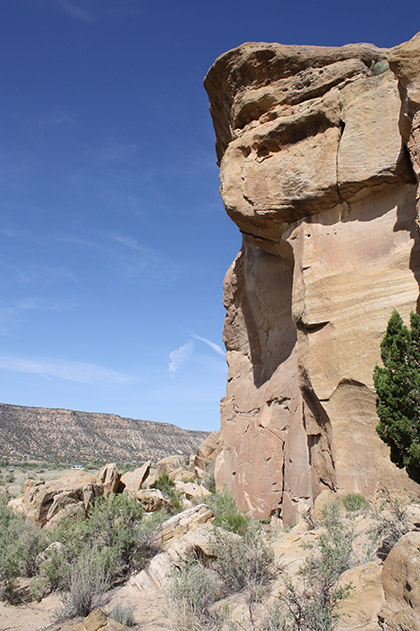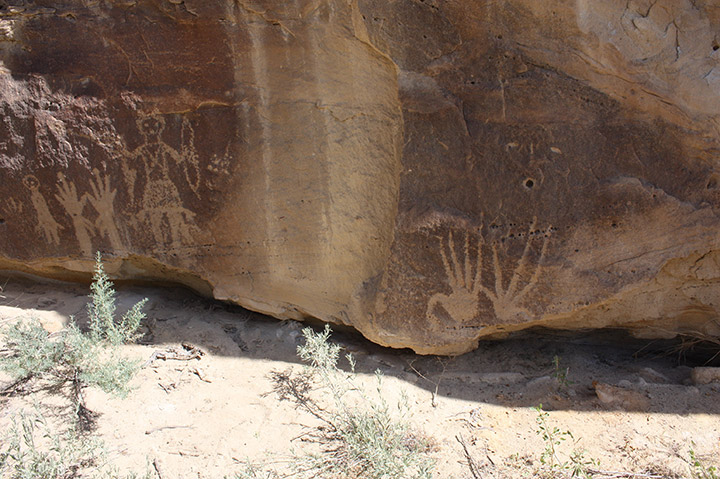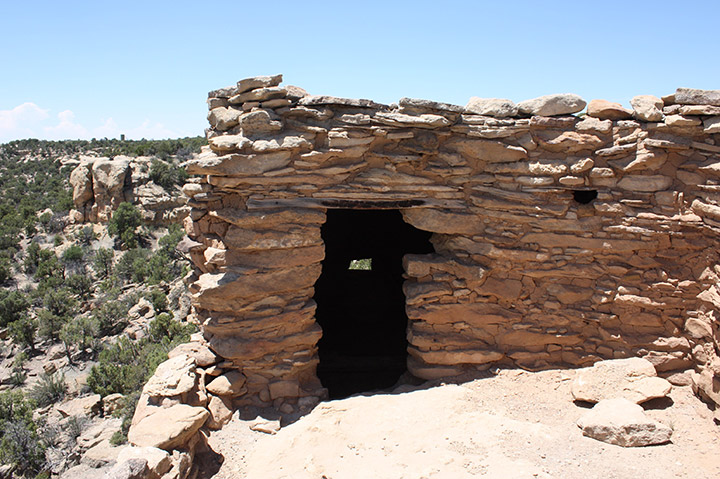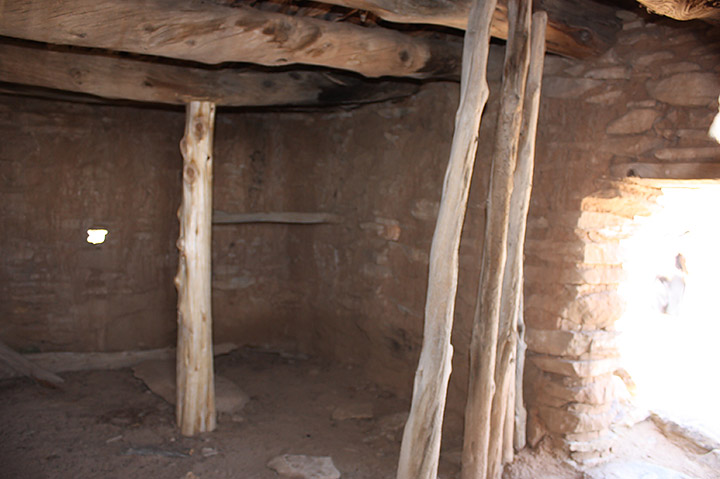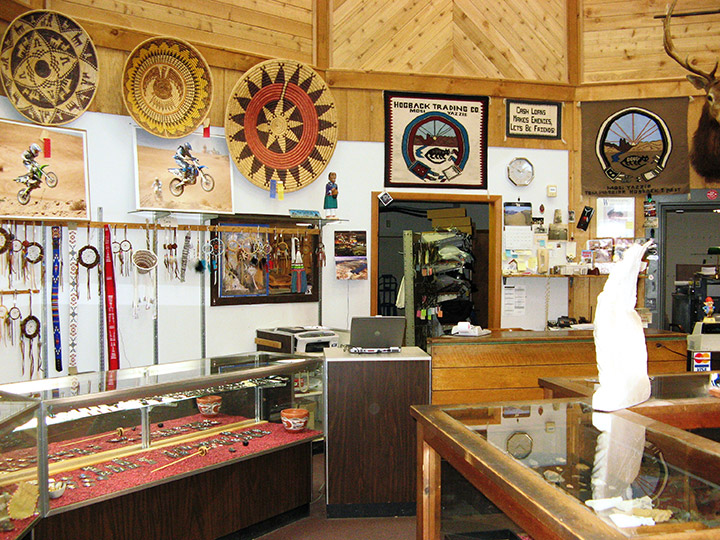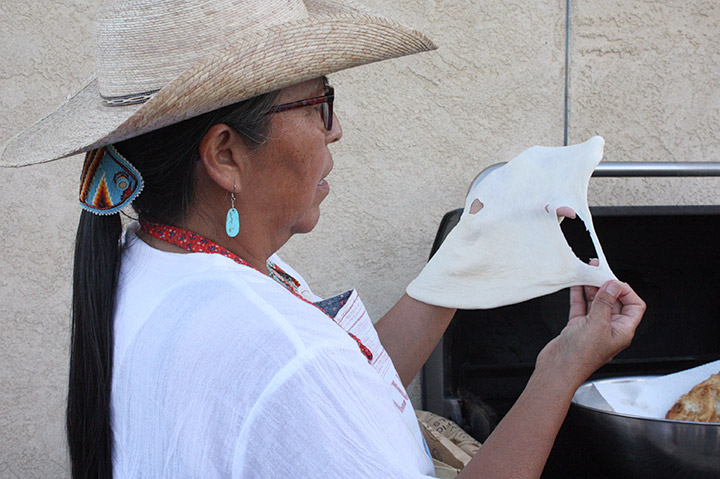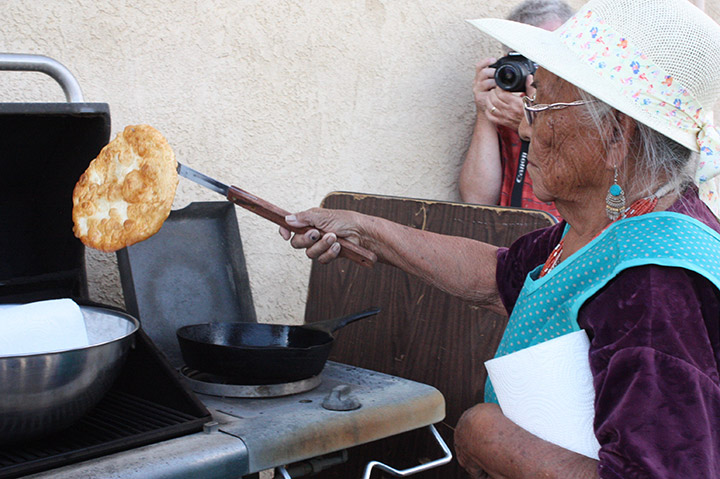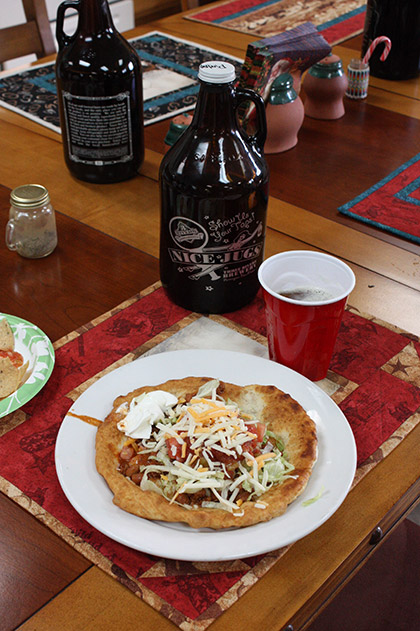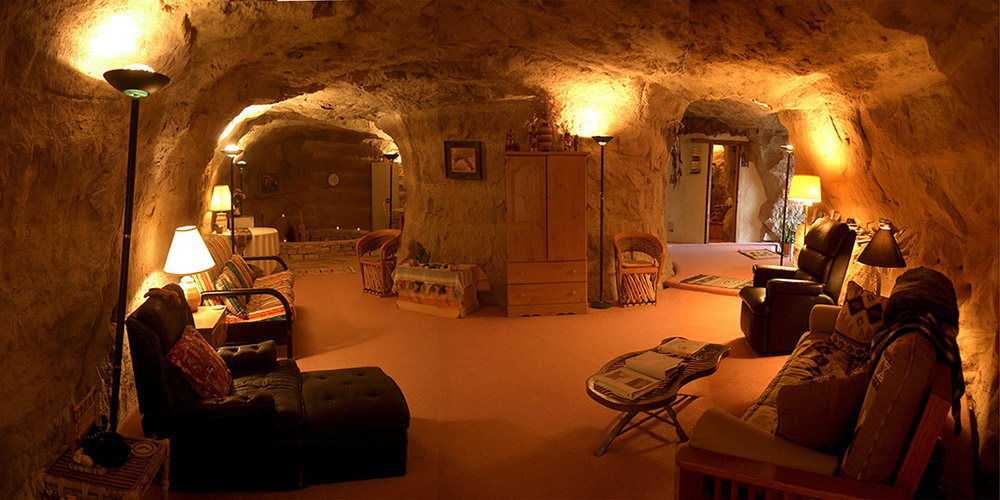TRAVELOGUE: Farmington NM – An Overnight Destination, Part Two
The rich culture of the Navajo People — known in their own language as the Diné — provides a vibrant historical foundation for the Farmington area. My visit included an ancient Navajo site known as Dinétah… plus a tour of the historic Hogback Trading Post… and my first taste of traditional Navajo fry bread.
To fully appreciate the cultural importance of the Dinétah site, I highly recommend joining — as I did — a tour group guided by archeologist Larry Baker, Executive Director of Salmon Ruins and Museum, two miles west of Bloomfield. The museum at Salmon Ruins (pronounced ‘solmon’) showcases a collection of the pottery, jewelry and tools found on the site and is also home to the San Juan County Archeological Research Center and Library.
We met at the museum, hopped into an SUV, and embarked on a drive that began on the highway, but was mostly on dirt and gravel unmarked roads that wove here and there, serving an enormous natural gas field. I can’t imagine this trip being self-guided. We drove for miles, made several stops in the middle of nowhere, and were able to view amazing Navajo “rock art”, or petroglyphs.
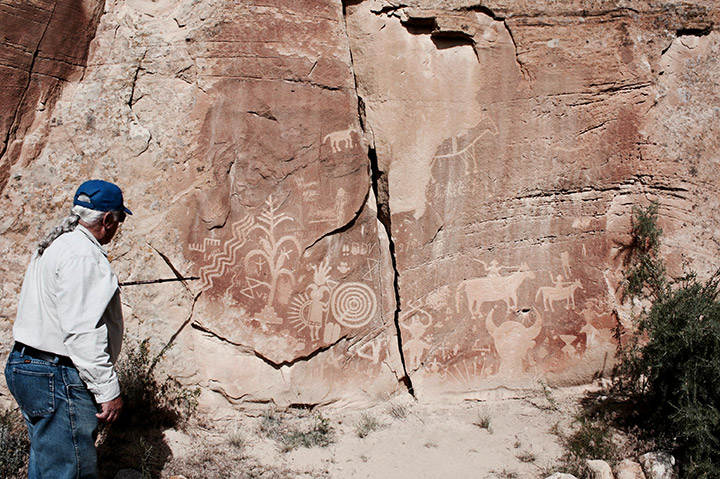
Larry Baker points to a petroglyph showing a life size cornstalk and mysterious concentric circles. Baker believes the panel on the right depicts a battle with the Spanish in 1705.
Besides the Crow Canyon petroglyphs, washes, and expansive views, we also explored two Pueblitos, called “defensive sites” by the Navajos.
The Navajos eventually abandoned Dinétah, but return for ritual ceremonies.
We were also treated to a trip to Hogback Trading Post.
The trading post is owned and run by Tom Wheeler, and deals in authentic Native Indian arts and crafts, as well as necessary supplies that are difficult to find elsewhere. Tom tells an interesting story about how his great-grandfather Joseph, a Mormon from Utah, came to this place, and became a trusted trader with the Navajos. It’s a fascinating story, but, since none of Tom’s children are interested in becoming the fifth generation to run the Hogback Trading Post, the story may some day be a story of the past.
We also learned from Tom about the sometimes symbiotic, and sometimes love-hate relationship between the Navajos and the Pendleton Company. At the same time the Navajos were making blankets for the tourist trade, they were buying Pendleton blankets for Native ceremonies, rituals, and gifts. The Navajos had, and still have, an affinity for Pendleton blankets.
Tom Wheeler’s love for what he does is expressed in this traditional Navajo blessing that may be found in shop: “May you walk in beauty On a rainbow trail And dwell in the house of happiness With beauty all around you.”
Dinnertime arrived, and we were treated to traditional Navajo Tacos. Navajo fry bread is the basis for these tacos, so we watched a demonstration of how the Fry bread is made by the famous (and spunky storyteller) Navajo weaver Sarah Naataanii and her daughters, Sharon and TahNibaa. My first-ever taste of fry bread was hot out of the skillet. It was simply delicious – light and not at all greasy, due to the high heat that quickly fries the dough. It’s a learned and nimble art.
After a day filled with Navajo cultural experiences and cuisine, a new experience awaited me the next morning.


